The Lost Cities – Cutucu Project
Pre-History: Doing things the right way
This Project started through curious circumstances way back in 1998. Dr. Keith Barron was on a field leave from a job in Venezuela and enrolled in a Spanish language school in Quito and lodged with Professor Octavio Latorre and family. Professor Latorre is a Historian, Archivist and world authority on the earliest maps of the Amazon region. Professor Latorre told Dr. Barron that there had been 7 famous gold mines in the “Audiencia de Quito” (present day Ecuador) in the days of the Conquistadors, and that 5 had been relocated and two were still “lost”. The last to be relocated – Nambija – was found as recently as 1981 by a hunting party who stumbled on some open tunnels in the jungle. It had been abandoned in 1603 after an epidemic killed most of the native workers. The discovery precipitated a “rush” into the area by artisanal miners, and within months there were 25,000 of them on the site of the Nambija mine, in 75 different operations. Though it produced 2.7 million ounces of gold on the record between 1981-2000, an unknown amount of gold was sold into the black market. Few taxes were ever paid into the coffers of the Government and the miners have left a legacy of unstable underground workings, open sewers, unreclaimed spoil heaps and open holes, not to mention the total denuding of the area of trees and extinction of all wildlife. Nambija is the world’s most polluted site for mercury. In 2000, approximately 300 people were killed when unstable hills of mine waste buried half of the shanty town.
After Nambija was rediscovered, historians brought it to the attention of the Government that this had been a Spanish mine, and maybe before that, an Incan mine. It was known from numerous archival documents and contemporary maps. Prof. Latorre was contracted as one of a small group of historians tasked to pore through the records and look for old mines. The Government believed that if others could be located and secured, then they could be mined in a logical, planned, and technologically advanced manner, safeguarding the interests of indigenous peoples, and the fauna and flora, and with ultimate benefit to the State and people of Ecuador. Sadly, when the government changed, the work was no longer supported and the results were hastily thrown into a small paperback “Investigación Histórica de la Minería en el Ecuador” (published 1990) which is rather impenetrable except to the neophyte.
Aurania Resources intends to follow through with the original intentions of the Ecuador Government in the 1980’s. Our research shows overwhelmingly that the historical mines of Logroño de los Caballeros and Sevilla del Oro most certainly existed, and that they lie somewhere in the Cordillera de Cutucu, and most probably in areas remote from infrastructure. In the land selection process, EcuaSolidus S.A. strategically acquired the most likely areas for finding mineralization, based on knowledge of the geology and with the historical narrative as a guide. For seven years, a moratorium on new concessions was in place; this was lifted in March, 2016. During the moratorium Dr. Barron was anxious that artisanal miners would stumble into the area and produce another “Nambija” fiasco, which would be extremely destructive to the environment and prejudicial to native peoples and other stakeholders. Fortunately, that did not happen. Instead, Aurania intends to follow the stringent guidelines of the Ecuadorian Ministry of Mines (Ministerio de Minas) and the Ministry of the Environment (Ministerio de Ambiente), in its exploration, work, and consultation with the local communities, and always use “company best practices” in the conduct of the field activities. The concessions owned by Aurania are duly legally filed and protected by law from invasion.
In Canada, it is standard practice to sterilize an area using the geologists and staff of the Geological Survey of Canada, a federal institution, prior to establishment of national parks, to avoid making something off-limits that may be of value to the economy of the nation. In Ecuador, there is no body that is financed or logistically able to carry out this function which is why there are artisanal miners in Podocarpus National Park in the southern part of the country. The Government lacks the ability to police the area and evict them. Aurania intends to fully explore the concession areas and report back to the Government on releasing any areas without potential, so that they can be later incorporated into wildlife sanctuaries or other protected areas at their discretion. A 60% interest in the government royalty, payable to the local community is enshrined in the Constitution of the Republic. This means that local communities stand to benefit greatly with exploration jobs, and, payments from the Federal Government if exploitation eventually becomes a reality.




